by Fionn Adamian // Aug. 2, 2024
The title of Beth B’s retrospective ‘Now Wave’ at silent green makes a playful reference to the artist’s break out in the No Wave scene. Cutting her teeth on the hard bread of the movement’s anti-commercial aesthetics, Beth B launched her career with a series of emotionally umbrous 8mm films that screened as serial episodes in the cult venues of 1980s New York (think Mudd Club, Max’s Kansas City). Made in collaboration with Scott Billingsley, some of these early works included a raucous satire on kidnapping (‘The Offenders’) as well as the lobotomized readings of adoring letters to the leader of the Jonestown cult (‘Letters to Dad’). Since then, Beth B has developed a decades-spanning oeuvre that is as artistically broad (involving devices of documentary, noir and experimental) as it is thematically deep (entailing problems of trauma, institutional power, gender representation, war and drug addiction). Across this period, Beth B has never abandoned the ethos of the punk scene that got her into the biz in the first place. If confrontation is the epistemology of punk and truth to be found in the air of a screaming lung, then Beth B’s art has never run out of breath. In advance of the opening of her exhibition this month, we spoke to Beth B about the art of testimony, developing relationships with her collaborators and her return to Berlin at silent green.
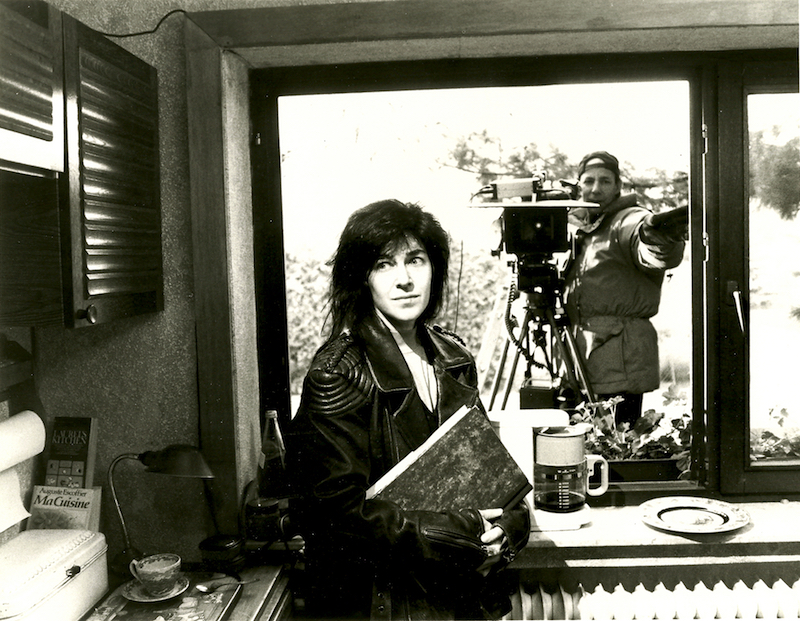
Beth B on the set of ‘Two Small Bodies,’ 1992 with Phil Parmet, DP // Courtesy of the artist
Fionn Adamian: The retrospective ‘Now Wave’ at silent green features not only the debut of the three channel installation ‘Glowing,’ but also a selection of your films from the past 40 years as well as installations and performances with close collaborators like Jim Coleman and Lydia Lunch. How has it felt for you personally to see such a sweeping retrospective of your art? What about revisiting your earlier films for the present context has perhaps surprised you?
Beth B: The ‘Glowing’ exhibition at silent green has offered me a unique and generous opportunity to connect the creative work I’ve been doing all these years, which breaks from specification. As an artist, I’ve worked in documentary, experimental and narrative genres, coinciding with my immersive interdisciplinary installations. ‘Now Wave’ is a deep dive into the themes of power and control that I’ve been excavating since the 70s ‘No Wave’ work, but with an intense connection to the universal voices of now. ‘Glowing’—the installation and live performance—echoes another dimension that is reflected in the film retrospective and continues my collaboration with artists whose talents inform and inspire me. Language and experiential visuals are key components in my work, challenging society’s conventions and focusing on social issues and human rights. I come out of the NY underground scene and still have my ear to the ground. What’s happening in the streets, not what’s in the media, not what’s perceived as acceptable. Questioning that notion of “normal” confronts gender (mis)representation, patriarchal power, racism, people with disabilities, addiction and the trauma of war with the potential to voice the unheard, see the unseen and break the cycle of abuse and violence.
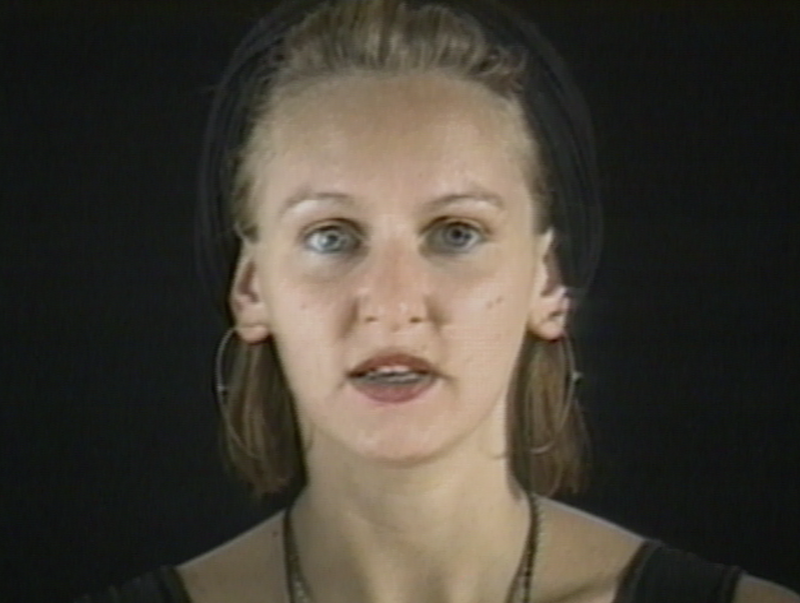
Kelly Considine in ‘STIGMATA,’ film still // Courtesy of the artist
FA: In ‘Glowing,’ like in your 1991 ‘Stigmata,’ we see many of the film’s subjects struggling to grasp for the right words for a particular traumatic experience—drug addiction, abandonment—as well as the decisions that led them out of the abyss. It almost seems that the act of recounting the trauma is more the main event of your art than the traumatic moment itself. Could you speak to the relationship between “talk” and “therapy” in your work?
BB: I look for deeply reflective, intimate testimonies of people’s struggles. Uninterrupted, they entrust us with stories of pain, heartbreak, addiction, loss…heading to the brink of crisis and feeling alone and isolated. These are deep, honest emotional truths spoken by these people that create thought-provoking dialogue and genuine connection with others. Drawing that pain out of the body and into the light is where there can be catharsis. Staying in the stasis of shame, guilt and fear of talking about these things perpetuates isolation. Therapy is great. I’ve been there, but to share our voices in a public way can diffuse loneliness and embrace community. I hope to engage audiences in a dramatic struggle to overcome adversity, placing the responsibility for transformation within our own grasp, while urging us all to challenge our own preconceptions and boundaries.
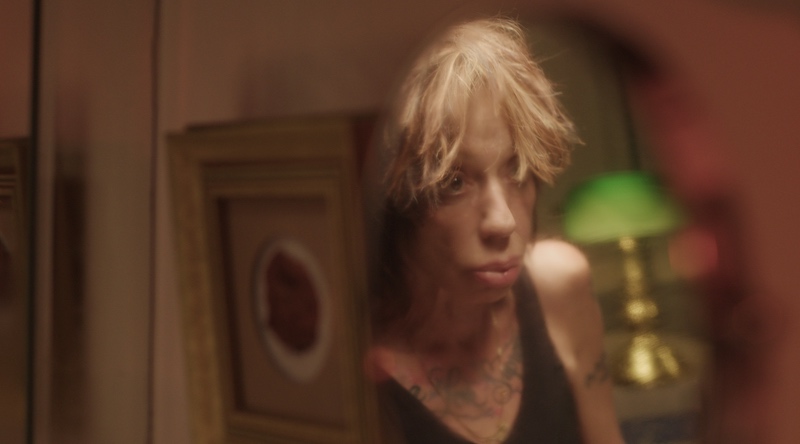
Beth B: ‘Glowing: Annie,’ film still // Courtesy of the artist
FA: In relation to this subject, ‘Glowing’ entails a significant degree of exposure and vulnerability on the part of your artist collaborators, who present their stories with a kind of monologic intensity. How did these collaborations come together in the case of ‘Glowing’ and how do you go about establishing the necessary trust between you and your collaborators?
BB: First, I have to feel a connection. Something deep with the other person. My films are not about bullshit. Then, it’s about trust. It’s about vulnerability, because that’s when we lose our ego. It is about exposure but not exploitation. By speaking about the difficult past, my fear often loses its power and I can be more in the present. I can let go of the myths that bind me and create healthier ways to be in life NOW. People know my work and trust me. I’ve known some of the people in ‘Glowing’ for years. Jim Coleman, my beautiful partner and collaborator for 29 years, has done the music for most of my films since 1995. There is an unspoken intuition when we work together and it’s enthralling and seamless. I’ve known Annie Bandez and Robbie O. Leaver for some years and respect their talent with words and song. I knew some of their life struggles and triumphs and wanted to challenge them with this collaboration. And then Vincent Dubuis, I met him in La Chaux-De-Fonds when I was showing films and we clicked. I told him about the project and he didn’t hesitate to share something very personal that only his family knew about. And No Anger, I only met on the first day of filming! I saw them dance in a film and immediately I knew I had to work with them. Sometimes my connection with others is inexplicable. After a day of filming in Lyon, they said: “I feel like you totally understand me.” That felt true for me as well and it was a deep love that developed in the three days of filming. Perhaps it’s a sense of the creative unconscious that comes together with some people. I’m always simultaneously grateful and scared. Trust is precarious. I hope to tread lightly even though I’m often wearing heavy boots.
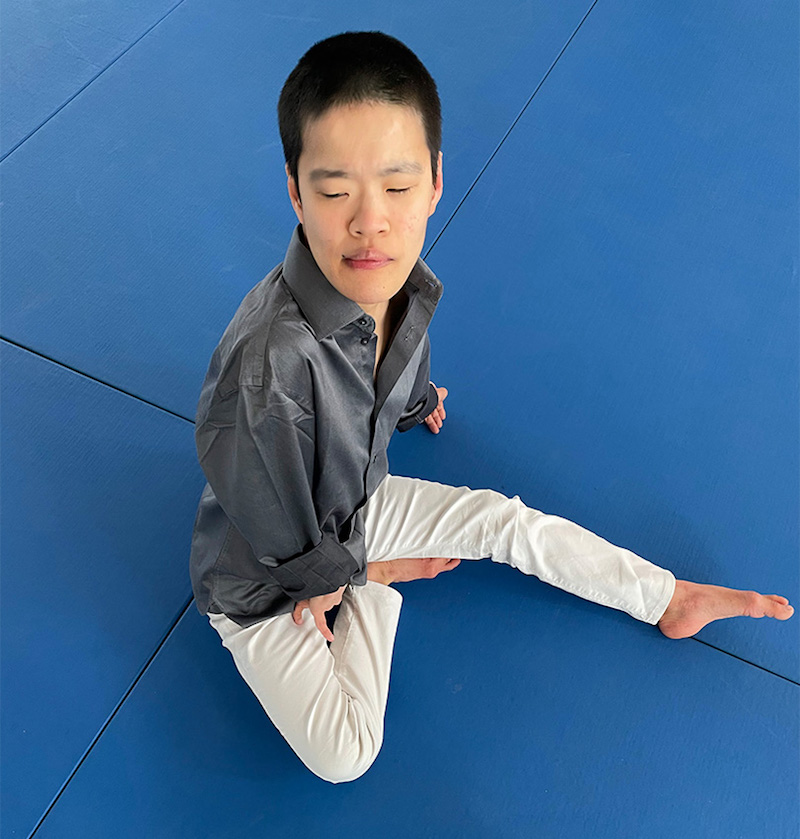
Beth B: ‘Glowing: No Anger,’ film still // Courtesy of the artist
FA: The sound and video installation ‘Near Death’ has been specifically designed for the Betonhalle of the former crematorium at silent green—in my opinion, one of Berlin’s most special venues. Could you talk about the challenges and opportunities of presenting your work in this space?
BB: ‘Near Death’ is a sonic / film installation that was conceived of about eight years ago by Jim Coleman. I listened to what he was doing and wanted to collaborate on the project. We looked for many years for the right venue. Nothing was right. Then! silent green! The perfect match. We looked at the Forensic Room and saw the possibilities for this three-part installation. I feel a kind of glowing for life at silent green—the architecture, the history, the floating voices of the people who ascended the chimney. I think of Tina, Jorg and their extraordinary colleagues with profound gratitude and excitement. There haven’t been challenges (except with the workload to prepare the films, still editing them now) but rather an entirely inviting landscape to explore and explode ideas that have been percolating. I’ve been inspired by the venue, the people who work there and it’s a dream to be showing there.
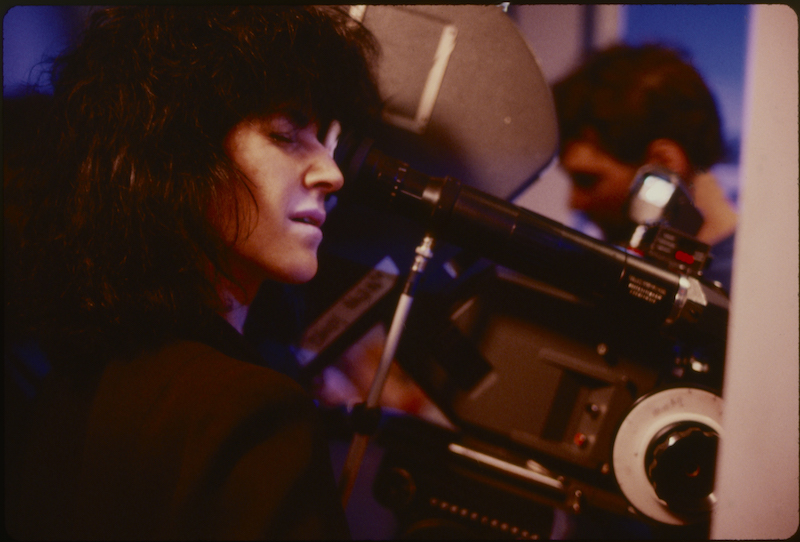
Beth B on the set of ‘SALVATION’ // Courtesy of the artist
FA: A lot of young artists look to you as an icon of experimental film for encouragement to become the truest versions of themselves as filmmakers. On the other side of the coin, who are some of your favorite younger artists and filmmakers that are working today?
BB: On Saturday, Aug 17th at 18:00, you are invited to see Emma Swider’s controversial film, ‘Marinn Company,’ which will screen at silent green in the women’s short films program. It is unapologetic and clearly from the voice of a powerful director. You will see who I am drawn to. Come meet Emma at the screening.
Artist Info
Exhibition Info
silent green
Beth B: ‘Glowing’
Opening Reception & Concerts: Thursday, Aug. 15; 7pm
Exhibition: Aug. 15-25, 2024
silent-green.net
Gerichtstraße 35, 13347 Berlin, click here for map


























